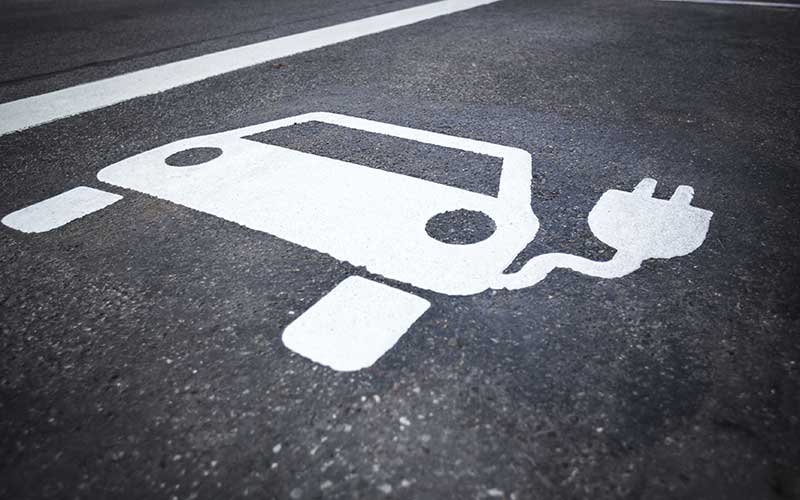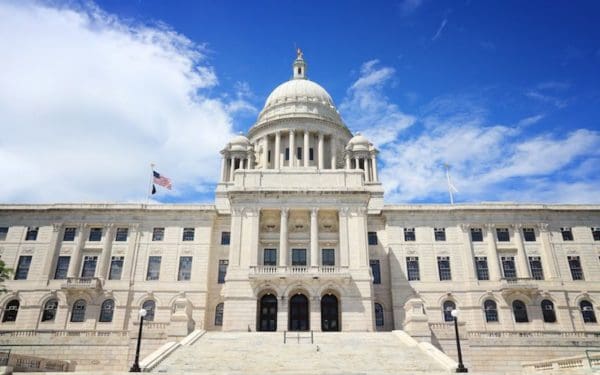
Electric vehicle sales soared in 2018, but we need a faster transition away from our gas guzzlers to avert climate catastrophe. Photo: moreimages via Shutterstock
2018 was a year of milestones for electric vehicles (EVs) in the United States. In October, the country’s one-millionth EV hit the road. Sales for the year soared 80% higher than in 2017 and continue to rise, with December recording the highest sales to date.
It’s fantastic to see Americans embracing electric vehicles and moving away from our dependency on fossil fuel–guzzling engines. But the transition needs to happen much more quickly if we’re going to reduce carbon pollution to the level required to avert climate catastrophe by 2050.
There’s a lot that you and I can do to help move the electric vehicle revolution along, including contacting legislators to encourage the policies you’ll read about below, committing to test driving (and buying) electric for your next car, and helping to bust myths about EVs among your friends, family, and colleagues.
Electric Vehicles are Critical to Solving the Climate Change Puzzle
Transportation spews more carbon pollution than any other source in the United States, while tailpipe pollution causes asthma and other health problems, especially in low-income and communities of color. This is particularly true in New England. While we’ve done a relatively good job of cleaning up pollution from our electricity generators (though we still have a ways to go in cutting our reliance on gas), people are driving more and more miles each year.
In Massachusetts, cars, trucks, and other equipment contributed 43 percent of the state’s emissions in 2016. In Connecticut, the share was 38 percent. In Maine, planes, trains, and automobiles (and boats) made up a staggering 52% of climate-damaging emissions in 2015. Clearly, any strategy to tackle greenhouse gas pollution has to include a plan for reducing emissions from transportation.
A critical part of cleaning up transportation is moving to vehicles that no longer rely on gas and diesel but instead are powered by electricity – everything from our personal cars and trucks to city buses, ride-sharing services, tractor trailers, and freight and passenger trains. There are a wide array of other strategies for reducing emissions from transportation – like encouraging people to drive less, providing more clean transit, shared-vehicle options or non-driving alternatives, as well as emerging new technologies, like self-driving cars – but those are topics for another blog.
With the federal government sitting on its hands (and worse), the action on electric vehicles is happening at the state level – so let’s look at some highlights from the New England states in 2018.
Connecticut Gets to Work Developing an EV Roadmap
Connecticut is in planning mode, actively developing a roadmap to scale up electric vehicle use, along with the charging infrastructure needed to support it. The roadmap will look at a host of factors to achieve this, including electricity rates that encourage more homeowners to make the switch; public, residential, and workplace charging equipment; and more opportunities to electrify vehicles beyond just the light-duty cars and trucks driven by you and me.
How you can get involved: You will be able to comment on the draft roadmap, which is expected to be released this spring.
Rhode Island Approves Major Utility Modernization Program
Last year, Rhode Island’s Public Utilities Commission approved a settlement (which CLF supported) involving significant investment in transportation electrification and grid modernization. It includes a rebate to encourage electric vehicle owners to charge their cars when electricity is least in demand, such as overnight; a charging station program; an initiative to reduce costs that would otherwise discourage installation of fast chargers; and annual evaluation measures.
How you can get involved: Get out and test drive an electric car and tell your local dealers that you want more electric options in the showroom.
Vermont Investigates How to Get More EVs on the Road
Vermont’s greenhouse gas emissions have risen in recent years, despite a state goal to cut them by 80 percent below 1990 levels by 2050. To help curb emissions, last year, the state’s Public Utilities Commission kicked off a process that is looking at ways to make it easier for people to buy and use EVs. CLF has been commenting throughout the process, urging the Commission to ensure simple, straightforward consumer access to charging infrastructure.
How you can get involved: The Commission is expected to release its recommendations on how to more rapidly deploy EVs in the state by July of this year. Learn more about this effort here and stay tuned for ways you can help move EVs forward in Vermont.
New Hampshire Laws Will Spur Adoption of More EVs
Laws passed last year in New Hampshire will encourage the adoption of more EVs statewide. The Legislature established a commission to make recommendations on EV charging issues ranging from technology, to tax credits for installation, to development of fueling stations along highways and in other public places. The State also passed a law requiring uniform charging station signage and ensuring that publicly funded chargers be compatible with all types of EVs. Additionally, the new law makes it easier for owners of charging stations – say, hotels or parking garages – to charge people for using them, providing an incentive for installing more stations.
How you can get involved: Share our video about how one New Hampshire driver has made the shift to electric – with no plans to go back.
Maine Elects A New Administration
After eight years without much to get excited about in the environmental realm, in November Maine voters elected a new governor who has pledged to support clean energy, combat climate change, and encourage modes of transportation that will reduce carbon pollution. Maine’s new legislature just kicked off its 2019 session, and some promising transportation bills have been introduced. We expect that this year will yield many more transportation highlights than last – stay tuned!
How you can get involved: Make sure you’re signed up for our email alerts, so you’ll be the first to know when you can make your voice heard on legislation and other EV developments.
Massachusetts Makes Incremental Progress
Last fall, Massachusetts approved one of the largest utility EV programs in the country, coming on the heels of a similar approval the year before. The $25 million program will make a significant investment in charging infrastructure statewide and provide for data collection and analysis to inform and improve future transportation programs.
In December, the governor’s Commission on the Future of Transportation reported back on its study of climate, electrification, public transit, and other topics affecting transportation in the Commonwealth. Among recommendations to prioritize investment in public transit and make roads and bridges more resilient to climate change, it acknowledges the need for transportation systems to address social equity. It also recognizes that zeroing out emissions from transportation by 2050 will require all vehicle sales to be electric (or otherwise zero-emitting) by 2040.
How you can get involved: Several bills have been introduced in the Massachusetts legislature this year to push the transition to electric vehicles, your voice will be critical in helping to get these bills passed.
(Some) Volkswagen Funds Used to Jumpstart Electrification
You probably recall the Volkswagen (VW) emissions scandal several years ago, when the car manufacturer admitted to installing “defeat devices” on certain diesel cars to cheat air pollution tests. The subsequent lawsuits resulted in one of the largest corporate settlements in U.S. history and included more than $200 million to the New England states. This offers exciting opportunities to accelerate the transition to clean, electrified transportation, but not every state is allocating its share of the funds to this purpose. Stay tuned for a more detailed analysis of the state plans and their plusses and minuses in a future blog.
What’s next?
Electric vehicles are good for our climate and our health. They’re also good for the economy, keeping money here at home instead of spending it importing oil and gasoline.
New England made strides toward cutting emissions from the transportation sector in 2018. But it’s important to keep our eyes on the climate change prize: reducing carbon emissions to net zero by 2050. To do so, we need an all-hands-on-deck effort from government, utilities, automakers and auto dealers to push this new technology over the tipping point.
At CLF, we will keep the pressure on by working to develop programs to reduce climate emissions from every sector so that we can reach the ultimate goal of net zero emissions by 2050. And we will advocate for standards and policies that promote the conversion from gas guzzlers and ensure access to clean electric transportation for everyone.



